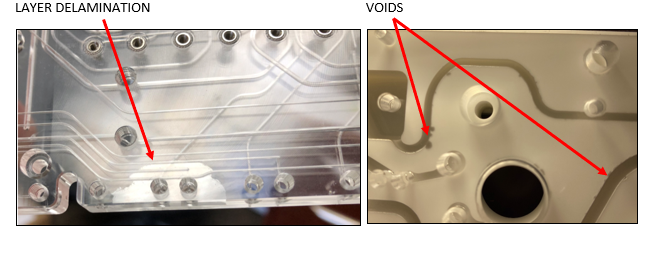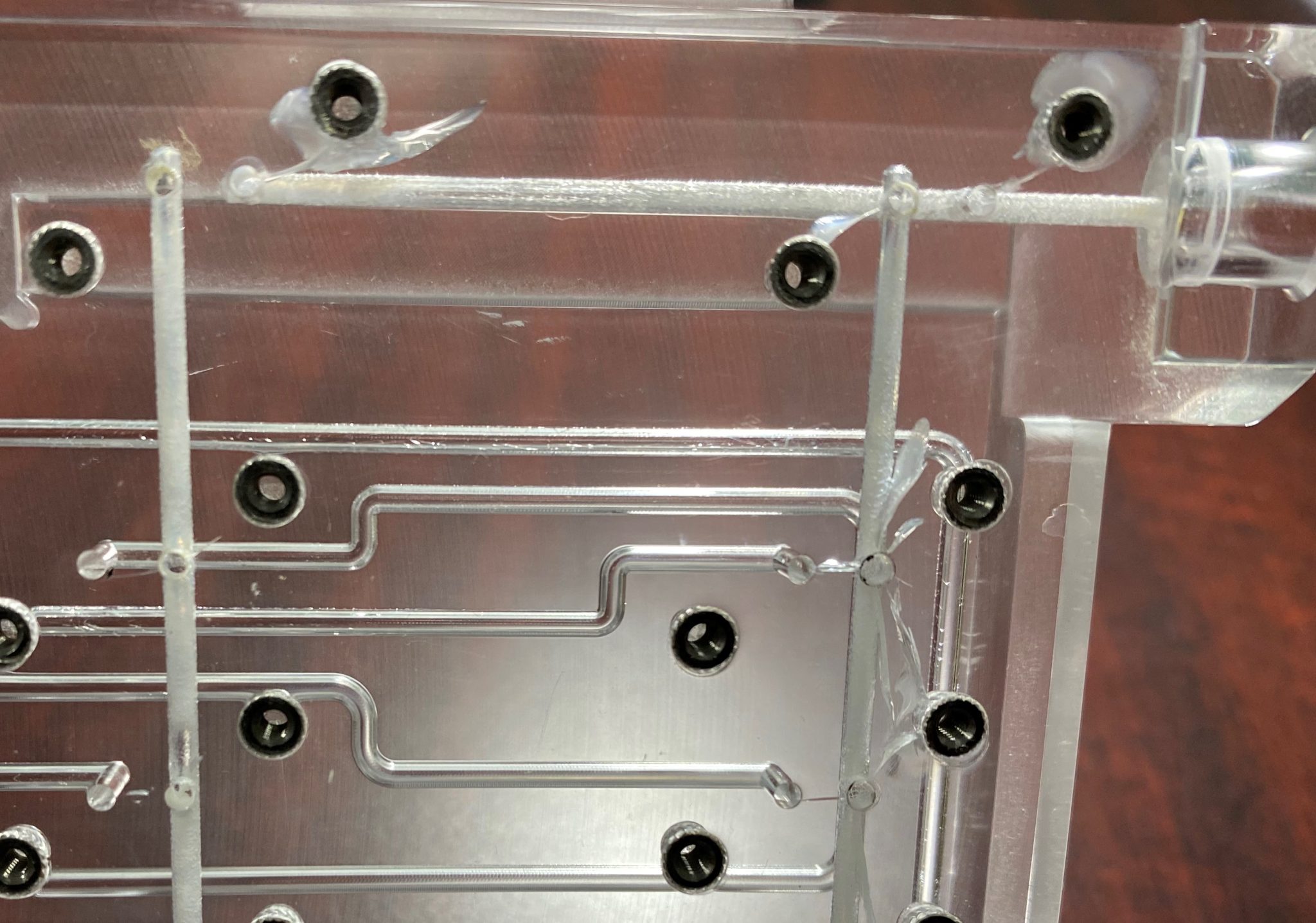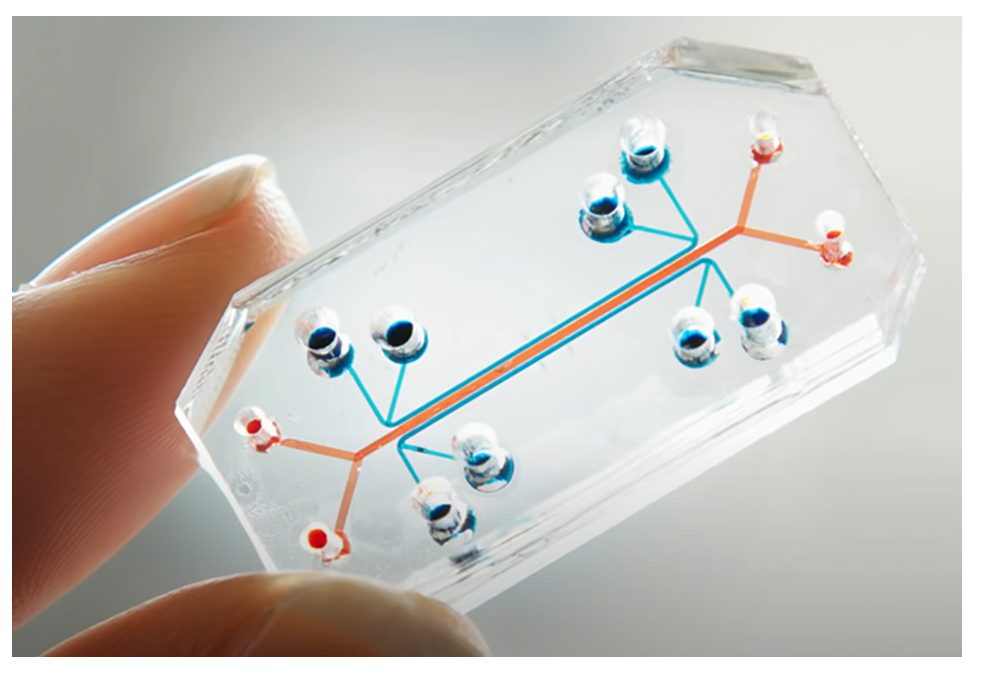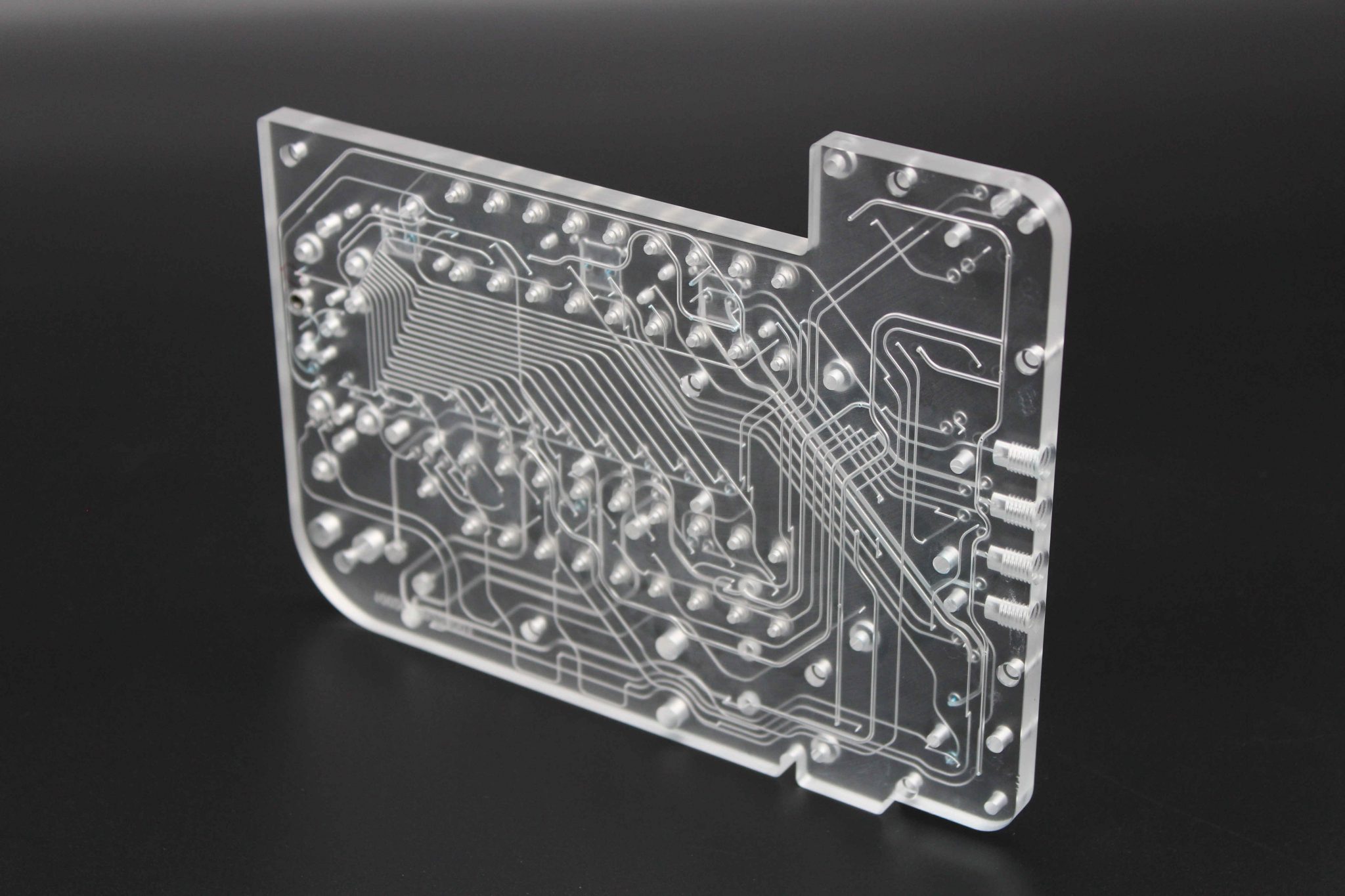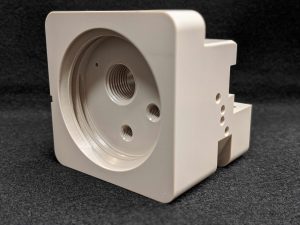The Risks of Solvent Bonded Manifolds
In the world of fluidics, OEMs often rely upon bonded manifolds as a critical-to-function piece of laboratory instruments. These fluidic hubs route samples, reagents, cleaning solutions, water, and waste through various processes within life science and medical applications, such as DNA Sequencing, flow cytometry, and chemical analysis devices. Although there are a few methods to manufacture multi-layer manifolds, bonded manifolds are primarily created through two methods: solvent bonding and diffusion bonding.
While many companies offer solvent bonded manifolds as a cheap alternative to diffusion bonding, there are inherent risks associated with using this production method. In this article, we delve into the risks and potential dangers of solvent bonding as compared to the higher quality alternative: diffusion bonding.
What Are Solvent Bonded Manifolds?
Solvent bonded manifolds are manufactured with a bonding process that involves the use of solvents to join different components together. The primary method of solvent bonding manifolds involves the use of a chemical called “methylene chloride.” This chemical can soften the mating surfaces, which allows an operator to fuse or “glue” the pieces together.
The Risks of Solvent Bonded Manifolds
While solvent bonded manifolds may seem like a cheap, viable option at first glance, they come with several significant drawbacks. The afore-mentioned chemical used for solvent bonding, methylene chloride, is very aggressive against the types of thermoplastics used in bonded manifolds. In fact, if left to long enough exposure with this chemical agent, the plastics will completely dissolve into a granular-like pool of leftover waste. Solvent bonding, by its nature, introduces weak points at the bonded joints and surfaces due to the inherent differences in material properties between the bonding agent and the base materials.
Compromised Structural Integrity
This presents some obvious risk factors when using methylene chloride for bonding a manifold that is destined for use as a fluidic hub in a laboratory instrument. The solvent application process is difficult to control, relying heavily on the skill of the operator and precise control of bonding conditions, leading to inconsistencies in bond quality and material degradation. Potential (and often seen) results are weakness in the material’s structure, stress cracking, and delamination, which all may contribute to leaking, sample contamination, or system failures – not ideal for highly precise fluid control. These factors can also significantly reduce the lifespan of solvent bonded manifolds, bringing into question their viability as a long-term product solution.
Temperature and Pressure Sensitivity
Increased temperatures and pressures, often found in life science, aerospace, or medical device systems, only serve to increase the risk of solvent bonded manifolds exhibiting these types of issues. High temperatures, or variable operating temperature ranges, add additional stress to thermoplastics, potentially leading to failure at points of weakness, such as areas that have been exposed to solvents.
Chemical Compatibility
The primary use of most bonded manifolds is to provide total control of fluids routed through the various functions of a device. Typically, manifolds must be capable of ensuring that no foreign contaminants or adverse chemicals influence the results of testing or the performance of the laboratory instrument. The potential for methylene chloride to come into contact with test samples or reagents is a risk that most life science and medical OEMs do not want present in their devices.
A Closer Look at Diffusion Bonding
In contrast to solvent bonding, diffusion bonding does not use a solvent, glue, or other bonding agent. The bond is achieved in a precisely controlled environment with only the use of heat and pressure, allowing the atoms at the interface to diffuse and form strong bonds without the need for additional adhesives or solvents. This results in a superior quality product, particularly for critical applications like flow cells for laboratory instruments used in life science and medical research.
The Superiority of Diffusion Bonded Manifolds
Diffusion bonded manifolds offer several key advantages over their solvent bonded counterparts. One of the most significant benefits is their unmatched strength and durability, thanks to the strong bonds formed during the diffusion bonding process, and the reduction in residual stress found in the plastic materials. There is no risk of contamination present, as the uniform bond is achieved without the presence of unwanted foreign materials. In addition, diffusion bonding is a highly controlled process, not relying on the skill of an individual operator, which provides much more consistent results and an overall higher quality product.
Case Studies: The Success of Diffusion Bonded Manifolds
Real-world applications highlight the superiority of diffusion bonded manifolds. For instance, in the aerospace industry, diffusion bonded manifolds have been instrumental in ensuring the reliability of hydraulic systems in aircraft, where failure is not an option. Similarly, in the medical field, diffusion bonded manifolds are used in devices where precise control of fluids is critical to test results and patient care.
The Importance of Quality in Manufacturing
When it comes to critical components like manifolds, compromising on quality is frequently not an option. The reliability and longevity of these components can have a significant impact on the overall cost, performance and safety of the systems they are a part of. While solvent bonded manifolds may appear to offer cost savings, the risks they pose often far outweigh any perceived cost benefits. A higher quality manufacturing process like diffusion bonding ensures consistent performance and peace of mind for OEMs and end-users alike.
Choosing the Right Manifold Manufacturing Partner
Selecting the right manufacturing partner is crucial when it comes to ensuring the quality and reliability of critical components like bonded manifolds. Piedmont CMG specializes in the fluidic applications of plastics, with a proven track record of delivering high-quality products. Additionally, the use of proprietary processes and advanced manufacturing techniques can further enhance the performance and longevity of manifolds. By partnering with a trusted expert in manifold manufacturing, companies can ensure the integrity of their products and minimize the risks associated with solvent bonding.
Are you ready to enhance the design flexibility, reliability and performance of your products? Contact us today to learn more about our proprietary diffusion bonding process and how it can revolutionize your manufacturing needs.

